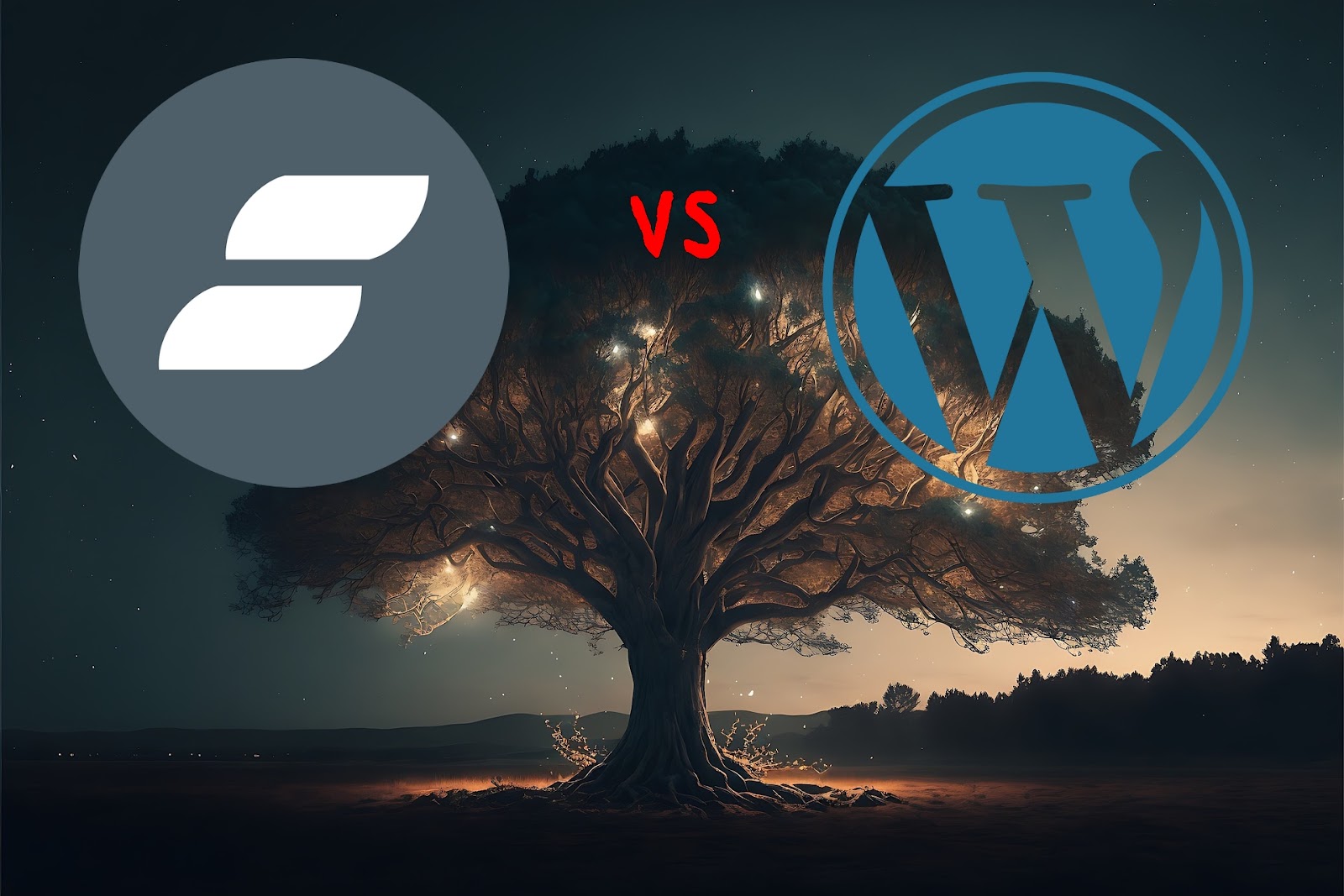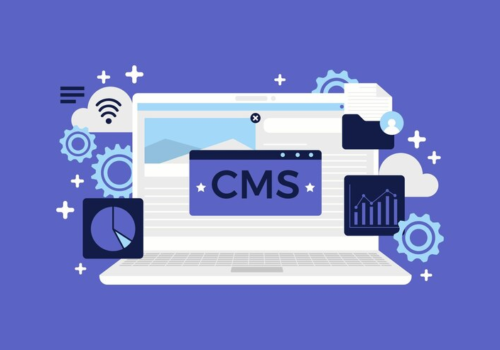Showit vs WordPress: Choosing the Right Platform in 2023
In the dynamic world of website creation, choosing the right platform is crucial for both personal and business projects. This article dives into a detailed comparison between two prominent platforms: WordPress (hereinafter also “WP”), a widely-used Content Management System (CMS), and Showit (hereinafter also “SI”), a user-friendly, drag-and-drop website builder.
While WordPress powers a significant portion of the web, Showit has been gaining traction with its intuitive design interface. Our analysis will cover various aspects, including user experience, customization capabilities, and target audience, to help you decide which platform aligns best with your website creation needs.
WordPress vs. ShowIt (2023) — Selecting the Ideal Platform
Navigating the landscape of website platforms can be challenging. WP, with its significant presence powering a substantial portion of the digital realm, stands as a formidable Content Management System (CMS). In contrast, SI, emerging more recently, has successfully cultivated a user base of over 40,000 webmasters across 13 years.
Each of these platforms brings unique strengths to the table, catering to distinct audiences. This in-depth comparison will delve into their key features and user-friendliness to assist in determining which platform aligns best with your specific web development needs.
Target Audiences
WP has established itself as a multifaceted platform, serving a broad spectrum of users, ranging from individual bloggers to large-scale online retailers. Its adaptability and potential for growth make it a popular choice across various sectors. Conversely, SI is tailored to cater to those stepping into web development or those who favor a graphic-intensive, intuitive building environment.
The choice between WP and SI often mirrors the classic Mac vs. PC preference, with SI leaning towards users who value straightforward design processes over intricate customizability. Notably, SI integrates WP’s blogging capabilities, highlighting WP’s strength in content management. SI primarily attracts photographers and small enterprises, whereas WP’s appeal is more widespread, accommodating an array of web initiatives including personal blogs and extensive e-commerce platforms.
User-Friendliness
Both WP and SI are committed to simplifying the process of creating websites. WP focuses on making complex customizations approachable, while SI provides a platform akin to assembling a visual masterpiece, targeting individuals without programming knowledge. This segment compares their ease of use, considering varying levels of user expertise.
User-Friendliness in WP:
Engaging with WP begins with selecting a hosting solution, with options varying from the straightforward WP.com setup to more tailored hosting services. Upon securing hosting, WP offers an array of themes and fundamental web functionalities. Users can opt for a pre-installed theme or search for one that better matches their concept. Essential settings like Permalink Structure and Homepage preferences are easily adjustable.
For content creation, WP provides the Gutenberg Editor for block-based layouts and the Classic Editor for those who prefer a conventional editing experience. Themes designed for visual page-building, like Divi, cater to users seeking a graphic design approach. Blogging on WP is streamlined, offering essential tools for post creation and systematic categorization.
User-Friendliness in SI:
SI’s visual builder is crafted for simplicity, bearing resemblance to Wix yet more refined. The platform is aimed at creative individuals lacking coding expertise, emphasizing ease from the initial setup to the final publication. Newcomers are greeted with a variety of templates and a guided setup journey.
SI takes charge of hosting, SSL certification, and website deployment, lightening the technical burden for its users. The platform’s onboarding process is enhanced with accessible guidance and instructional resources, ensuring a smooth introduction.
Built-In Tools and Browser Compatibility in ShowIt
SI focuses on enhancing user experience, offering a suite of tools to boost website functionality, especially in Search Engine Optimization (SEO). Key tools include:
- SEO Page Title and Meta Description: Vital for increasing web page visibility in search engines;
- Share Image: Improves the representation of the website on social networks.
However, SI doesn’t provide advanced SEO features like readability checks or native support for Schema markup. To offset this, it allows for custom JavaScript, CSS, and HTML integration across individual pages and site-wide. This capability is particularly advantageous for incorporating tools such as Google Analytics for in-depth website analytics.
A notable limitation of SI is its recommendation for using Google Chrome to ensure full compatibility. This requirement might be a constraint for users who prefer alternative browsers—nevertheless, those using Chrome experience a seamless editing process on SI.
The platform’s intuitive interface allows for easy editing of pages and elements. Its editing mode, akin to Photoshop, offers a layered view of content within each section. Additionally, SI provides a dual view of both desktop and mobile layouts, with the inclusion of a dark mode.
WordPress vs. ShowIt: Customization Features
Customization plays a pivotal role in the choice of a website platform, with WP and SI offering distinct approaches.
Customization in WP:
WP is celebrated for its comprehensive customization possibilities. Contrary to common misconceptions, WP enables extensive personalization through a combination of themes and plugins, accessible even to those with limited coding expertise. The platform boasts an extensive repository of over 59,000 free plugins and a multitude of premium themes, each offering unique functionalities and dedicated support. Key plugins include:
- Rank Math: A sophisticated SEO optimization tool;
- Divi: A visual site-building plugin;
- Exact Metrics: Integration for website analytics and Google Analytics;
- MemberPress: A plugin for creating membership sites;
- WooCommerce: A full-fledged e-commerce solution;
- Social Post Feed: For integrating social media content;
- Monarch: A social media sharing tool.
The degree of customization in WP is limited only by the user’s imagination and technical ability.
Customization in SI:
SI distinguishes itself with an intuitive, drag-and-drop interface, ideal for beginners. However, customization options in SI are more constrained compared to WP. It operates as a closed system, with enhancements dependent on official updates. The highest-tier subscription includes a WP installation for added functionalities on the WP component of the site, though these don’t affect SI’s main pages.
Distinct Approaches to Themes and Templates
Exploring the theme and template options provided by WP and SI, it’s evident that both cater to diverse requirements but in different ways.
Theme and Template Diversity in WP:
- Expansive Theme Repository: WP boasts an extensive collection of complimentary themes, each designed to meet a variety of needs and preferences;
- Page Builder Themes/Plugins: With tools like Divi, WP enhances its offerings with drag-and-drop interfaces, allowing for deep customization without requiring advanced coding skills.
SI’s Template Offerings:
- Aesthetic-Centric Templates: SI focuses on templates that emphasize design aesthetics, streamlining the initial stages of the design process;
- Variety in Template Options: SI presents a range of both free and premium templates. Notably, their premium options can command higher prices compared to WP’s more economically priced themes.
In essence, while WP shines with its extensive and highly customizable themes and templates, SI offers a more design-focused approach with its templates, although they may not be as feature-rich as WP’s offerings. This difference is vital for users to consider, as it significantly influences the customization depth and functionality available on their websites.
Toolsets for Publishing and Efficiency
Comparing the publishing capabilities of WP and SI highlights their unique features and how they integrate these tools into their platforms.
Publishing Proficiency in WP:
- Versatile Block Editor: WP’s default Block Editor enables intuitive page construction with a variety of blocks, such as text and image, to structure content effectively;
- Classic Editor Option: For users inclined towards a traditional input method, WP maintains the robust WYSIWYG Classic Editor;
- Visual Page Building: With page builders like Divi, WP enhances its design-centric approach, facilitating visual page creation;
- Streamlined Publishing Workflow: WP simplifies content progression from draft to publication, incorporating role and permission settings to support collaborative work.
SI’s Unique Publishing Tools:
- Intuitive Visual Builder: SI is recognized for its visual builder that allows real-time design adjustments with an immediate preview of the outcome;
- Effortless Publishing Mechanism: SI enables quick publishing of site changes with additional undo/redo functions for error correction;
- Dual Editing Interfaces: SI uniquely provides separate interfaces for page editing in SI and blog elements via WP integration;
- Comprehensive Blog Design Tools: SI enables designing blog elements with dynamic WP content integration, while also ensuring consistent design for both desktop and mobile views.
WP offers a broader array of publishing tools, making it an ideal choice for content creation and blogging. On the other hand, SI’s dual-interface system, while innovative, might necessitate extra time for design tweaks.
Security Strategies and Measures
Security is a critical aspect of any web platform. WP and SI address security needs differently, adapting to the evolving requirements of website protection.
Security Layers in WP:
- Diverse Security Plugins: WP users have access to a spectrum of security plugins, ranging from basic to advanced protection;
- Robust Form and Comment Security: Integrating honey-pot and CAPTCHA plugins, WP aims to minimize bot and spam interference;
- Hosting-Level Security Measures: Exploring hosting solutions that include CDN can significantly enhance WP site protection against DDoS attacks;
- Emphasis on Secure Authentication: WP advocates for strong password practices and two-factor authentication to bolster security.
Managed Security in SI:
- SSL Certificate Management: SI automatically manages SSL certificates for all published sites, simplifying security for users;
- Non-Editable Source Code: This feature in SI enhances overall site security;
- Regular Backups: SI conducts routine backups, ensuring data is retrievable in unforeseen circumstances;
- Security for Integrated WP Blogs: Additional security layers are provided for SI sites with attached WP blogs.
While WP offers a wide array of security options requiring active user involvement, SI provides a more streamlined security management approach, beneficial for those seeking a more straightforward experience.
E-commerce Functionality
The e-commerce capabilities of WP and SI diverge, reflecting the intrinsic design and functional differences of each platform.
E-commerce in WP:
- Robust E-commerce Suite: WP provides a comprehensive array of e-commerce tools, making it a versatile option for various online business models;
- WooCommerce Integration: This plugin transforms WP sites into full-featured online stores, equipped with marketing, shipping, and custom checkout functionalities;
- Additional E-commerce Plugins: WP extends its e-commerce capabilities with plugins like Easy Digital Downloads, MemberPress, and LearnDash, catering to specific online business needs.
E-commerce in SI:
- Third-Party E-commerce Integration: SI necessitates external e-commerce solutions, either via different domains or through embeddable code snippets;
- Integration Options: Platforms such as Gumroad, Payhip, and Shoprocket offer viable e-commerce integrations for SI websites;
- Advanced Blog Package in SI: This package allows for WooCommerce integration, though it aligns more with WP’s capabilities, potentially complicating setups for SI-focused stores.
WP provides a more cohesive and comprehensive e-commerce solution through WooCommerce and various plugins. In contrast, SI’s reliance on third-party tools limits its capacity for extensive e-commerce features.
Scalability and Growth Potential
When evaluating WordPress and Showit, it’s crucial to consider their scalability and potential to support growth.
WordPress Scalability:
- Adaptable for Large-Scale Operations: WordPress can scale to meet the demands of growing businesses, from small blogs to large e-commerce sites;
- Extensive Plugin Ecosystem: A vast array of plugins allows for expansion in various functionalities, from SEO to customer relationship management;
- Customization for Growth: Advanced customization capabilities ensure that WordPress sites can evolve with changing business needs.
Showit Scalability:
- Ideal for Small to Medium Websites: Showit is best suited for smaller-scale websites, primarily focused on visual presentation;
- Limited Expansion Capabilities: While visually appealing, Showit’s features for scalability are limited compared to WordPress;
- Integration Challenges: For complex functionalities, relying on third-party integrations can become challenging as the business grows.
WordPress vs. Showit for Blogging
Comparing WordPress and Showit in the context of blogging highlights significant differences in their approach and capabilities.
WordPress for Blogging:
- Native Blogging Excellence: WordPress began as a blogging platform and continues to excel in this area, offering comprehensive tools for content creation, management, and SEO;
- Customizable and Expandable: With an array of themes and plugins, WordPress blogs can be tailored to meet specific needs and aesthetics.
Showit for Blogging:
- Dependent on WordPress Integration: Showit utilizes WordPress for its blogging functionality, merging visual design with WordPress’s robust blogging tools;
- Design Focus: While Showit offers a visually appealing interface for design, it relies on WordPress for the backend blogging infrastructure.
For those looking to replicate a WordPress website without direct access, various tools and methods are available to recreate the design and functionality, ensuring seamless transition and continuity.
Conclusion
In this comprehensive comparison of WordPress and Showit, we’ve delved into various aspects, from ease of use and customization to themes, templates, and e-commerce capabilities. WordPress stands out for its robustness, versatility, and scalability, making it suitable for a wide range of websites, from blogs to large-scale e-commerce sites. Its extensive plugin ecosystem and customization options offer unparalleled flexibility. Showit, with its visually-driven approach and user-friendly interface, caters well to smaller-scale, design-centric websites, although it falls short in areas like e-commerce and scalability.
The choice between WordPress and Showit hinges on the specific needs and goals of the user. WordPress is the go-to for those seeking a comprehensive, scalable platform with extensive functionalities, while Showit appeals to users prioritizing ease of use and visual appeal. As we have seen, even in areas where Showit integrates WordPress features, the latter’s standalone capabilities remain superior. This analysis underscores the importance of selecting a platform that not only meets immediate needs but also aligns with long-term growth and evolution.





